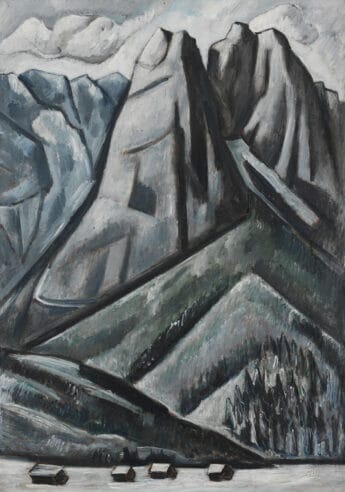
Born in Prenzlau, Germany, in 1867, Oscar Bluemner began his formal art training at the age of 9, eventually earning a degree in architecture from the Königliche Technische Hochschule in Berlin. He emigrated to the United States in 1892, and spent his first years in the U.S. moving back and forth between Chicago and New York City, working as an architect. He became a naturalized U.S. citizen in 1899, and settled in New York the following year.
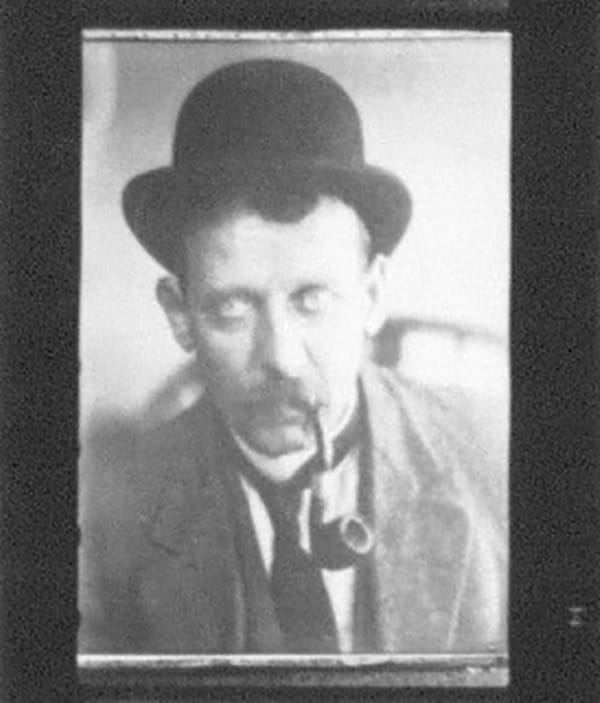
From 1916 to 1926, Bluemner moved around New Jersey, drawing and painting the architecture and landscape in brilliant colors, featuring his signature reds. The Vilcek Collection holds 15 works by Bluemner, including Perth Amboy West (Tottenville), 1911, 1915–17. Originally completed in 1911, Bluemner returned to this painting and several others in 1916, reworking the compositions. Over a dozen pages of studies and notes related to this work, in the Oscar Bluemner papers at the Archives of American Art, reveal the complexity of Bluemner’s artistic process in 1911 and 1915–17.
Perth Amboy West (Tottenville), a landscape featuring fractured planes of color, depicts a view between Perth Amboy, New Jersey, and Tottenville, Staten Island, New York.
Perth Amboy West (Tottenville), a landscape featuring fractured planes of color that suggest the influence of Cubism, depicts a view of the Arthur Kill between Perth Amboy, New Jersey, and Tottenville, a neighborhood on the south shore of Staten Island, New York. In the 1680s, the Lenape started ferry service between Perth Amboy and Tottenville. Perth Amboy was an important stop on the way from New York to Philadelphia during the colonial era, and ferry service continued between the two points until 1963. Bluemner recorded the conception of the work, “#2 Perth Amboy picture,” in his Painting and Theory Diary on July 24, 1911.i

The page includes his thoughts about line, form, and color along with a sketch of the full composition. He separated out the elements of the composition, using constructions of rectangles to depict grass and trees. Bluemner’s writing—a mix of German, English, and his own abbreviations that can be difficult to decipher—covered everything from canvas preparation and ideas about color theory and palettes, to descriptions of elements and overall compositions and Bluemner’s intentions for a work.ii
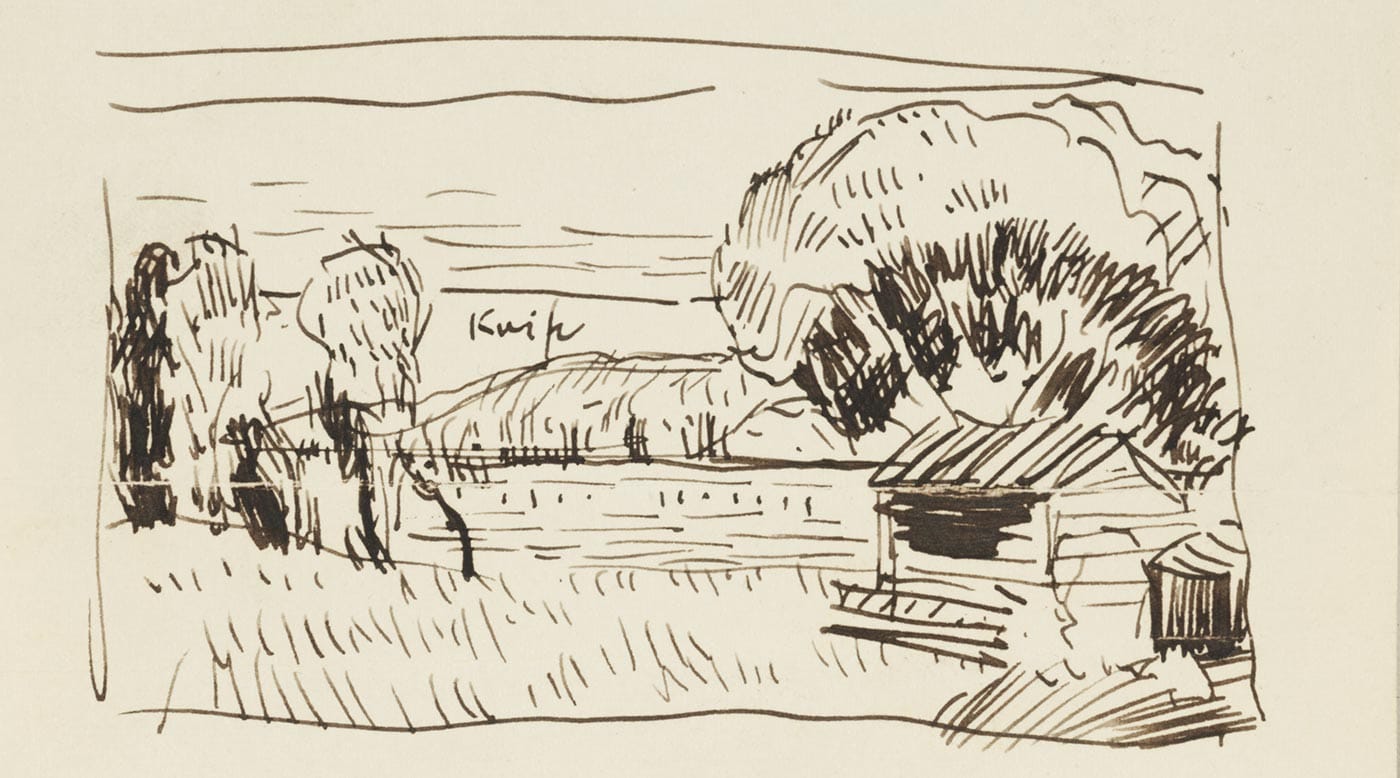
Perth Amboy West (Tottenville) is the second in a series of 20- x 30-inch paintings, and on July 26 Bluemner “commenced #2.” The scene was set at “7:30 A.M.” on a “brilliant morning.” He was searching for new forms of expression, and his vision for the work went beyond a transcription of a landscape. He wrote, “I will not paint sweet and idyllic, as all others do the humid soft atmosphere and delicate sky, naturally, making ladies sigh and poets dream. That is done by all. But to see this effect in a broad new colorite…” Among these notes, he made two additional small sketches of the composition. The overall composition is similar in all three, with a varying level of detail. In the third sketch, the composition remains the same, but Bluemner has added more details and included the notation “rosa” (“pink” in German) on the roof of the cottage in the foreground of the right-hand side.
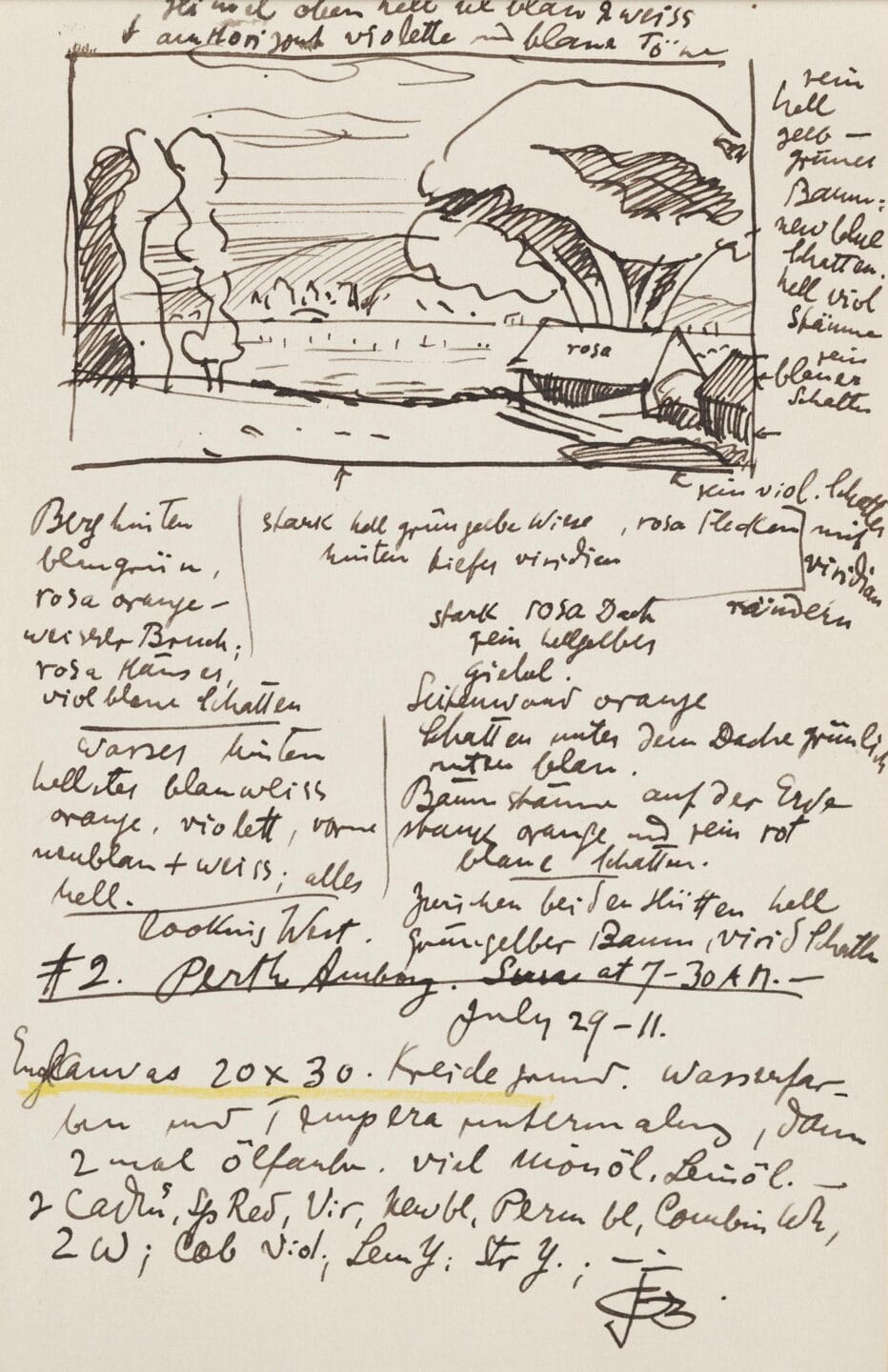
Beneath the sketch, among notes about color, Bluemner wrote “looking West,” suggesting the viewer is in Tottenville, looking west across the water to Perth Amboy. But the preceding page included the note “morning at Perth Amboy,” suggesting exactly the opposite view. In the index to the 1911–12 diary, the painting appears as Perth Amboy – Tottenville. When the composition reappears in Bluemner’s diary a few years later, it is titled simply Tottenville, and geographic exactitude takes a back seat to artistic evolution.
In April 1912, after completing the series and arranging for their exhibition in Berlin, Bluemner traveled to Europe, his paintings in tow. His arrival in April meant that he missed the March exhibitions of Die Brücke at the Galerie Fritz Gurlitt, where his exhibition was held to be held, and Der Blaue Reiter at Der Sturm Gallery. But as Barbara Haskell noted, Bluemner could not have missed books by Wassily Kandinsky and Frank Marc circulating in Europe at that moment. And that May, The Futurists debuted in an exhibition at Der Sturm.iii When he returned to the States, Bluemner set to work transforming the series, inspired by his exposure to these avant-garde movements.

Although this painting has previously been dated “1911, 1916–17,” a sketch of the painting included in his 1916–18 painting diary is actually dated to 1915, and appears to have been pasted in its current location. Based on its resemblance to the earlier sketches, it is likely a study based closely on the painting as it appeared at that time. Bluemner has written underneath it “Tottenville Bild restudied 1915” (“bild” is German for “picture”). Beneath that sketch and similarly pasted to the page (but on different paper from both the sketch above it and the paper it is pasted to) is a “Restudy of Tottenville Bild 1911 Jy -16.” In this version, Bluemner introduced a grid, which he used to fracture the planes of the painting. He also began dividing the trees into segments that move the composition closer to the kaleidoscopic scene we see today.
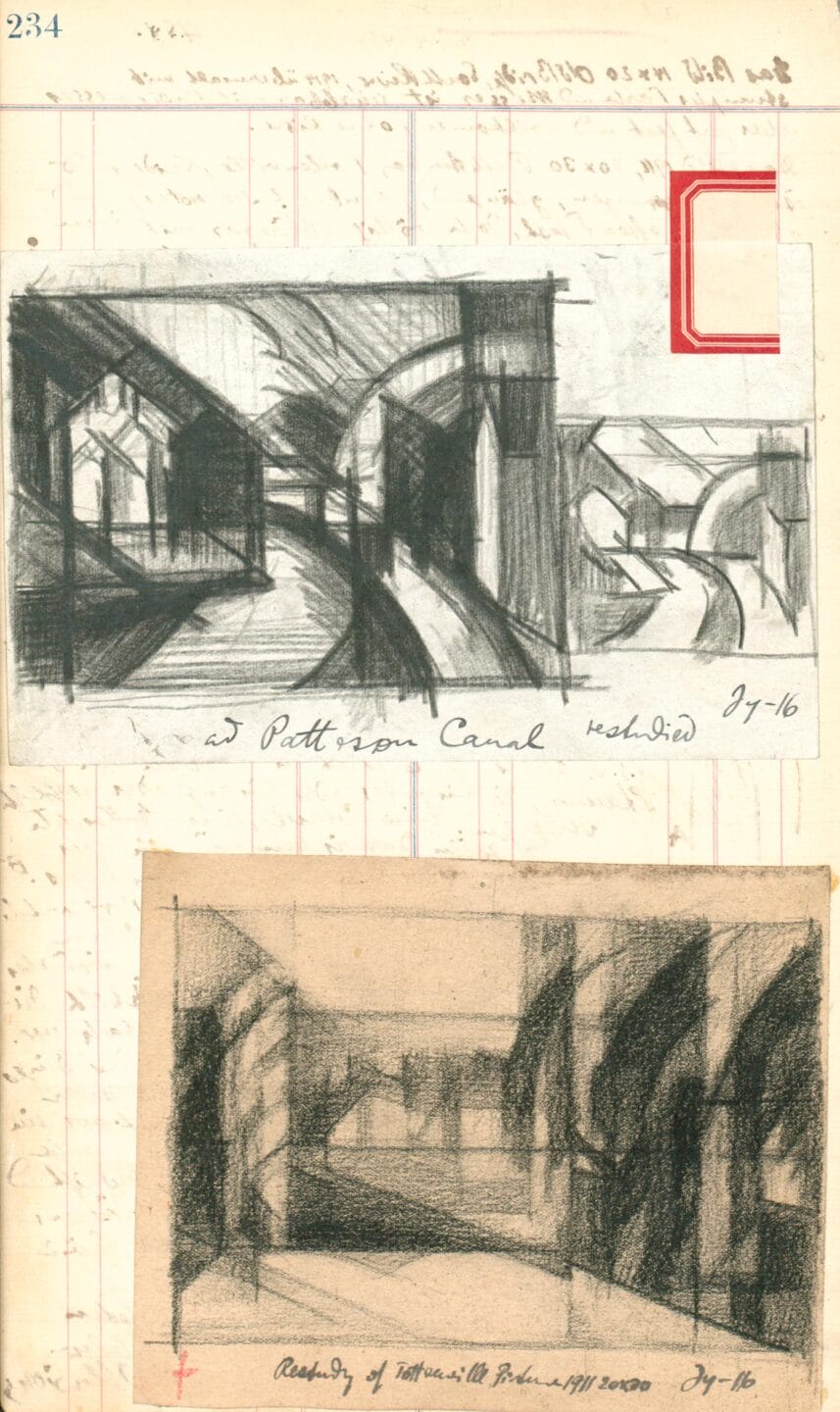
In July, Bluemner executed another “Restudy of Tottenville Picture 1911 20 x 30 Jy – 16.” In this study, the lines and angles are much sharper than the earlier sketch, as Bluemner crystallized the fractured planes of the composition. The ink marks give way to pencil lines that appear more deliberate in their application, shaded and filled in in varying grey tones. By early August, he had worked out a color study of the work. His notation at the bottom of the study, “Tottenville reptg Aug 5 -16,” suggests he had begun reworking the painting itself.
In August 1917, the work reappears in his diary in the form of two color keys and extensive notes. A diary page dated 13 September 1917 includes the title The ‘Sound’ at Tottenville, Perth Amboy. Bluemner retitled the painting once more after its completion—it appeared in the catalogue for the Bourgeois Gallery’s 1918 Exhibition of Modern Art, as Morning on Delaware River.
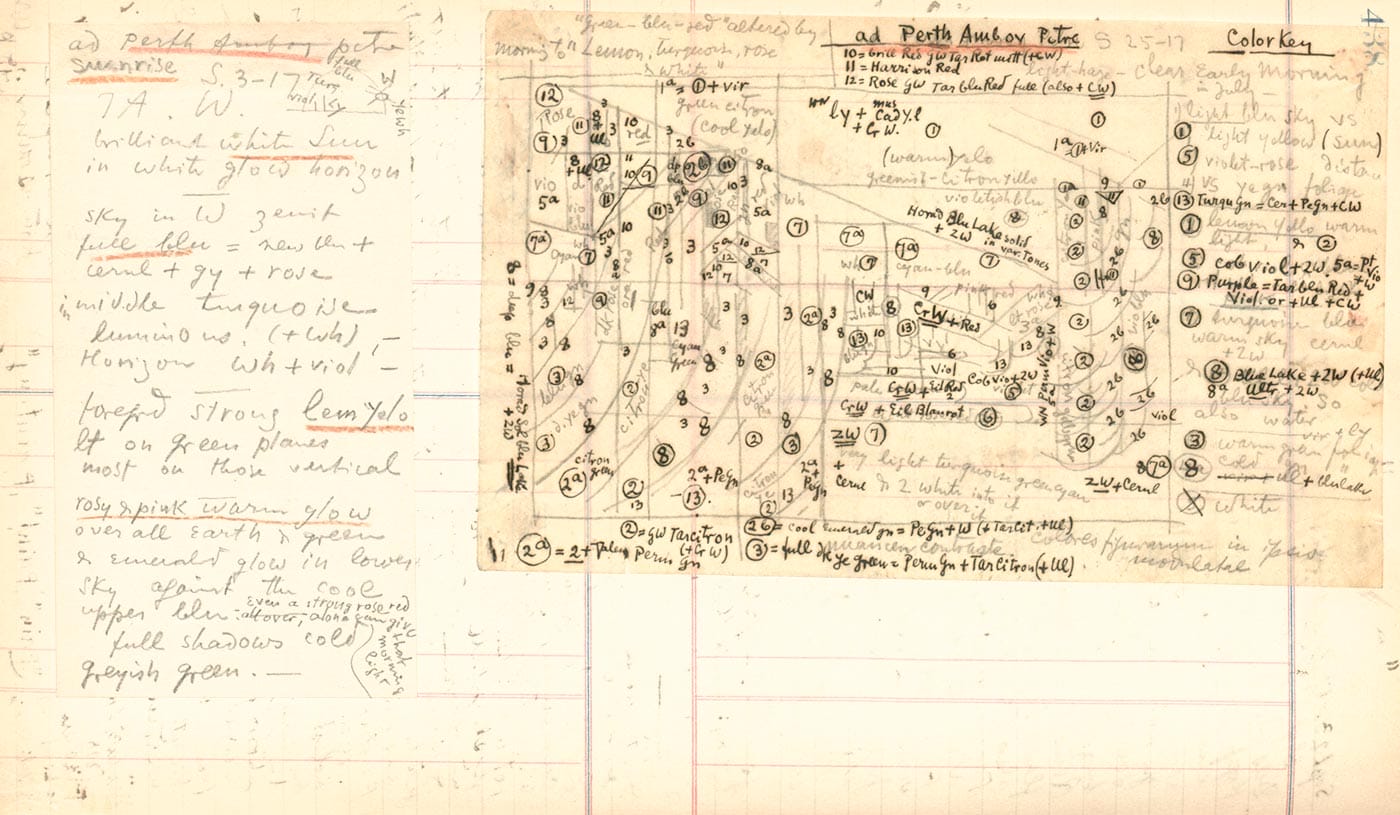
A copy of the catalogue in Bluemner’s papers includes an annotation in his hand “20 x 30 oil, Tottenville, $1000.”iv It is unclear what motivated this change in title and location—the Delaware River marks the western border of New Jersey—but it persisted in the decades that followed. The painting was included in Bluemner’s 1939 posthumous retrospective at the University of Minnesota, as Morning on Delaware (Growing Stillness) and in exhibition catalogues in 1969 and 1972 it was listed as simply Delaware River.
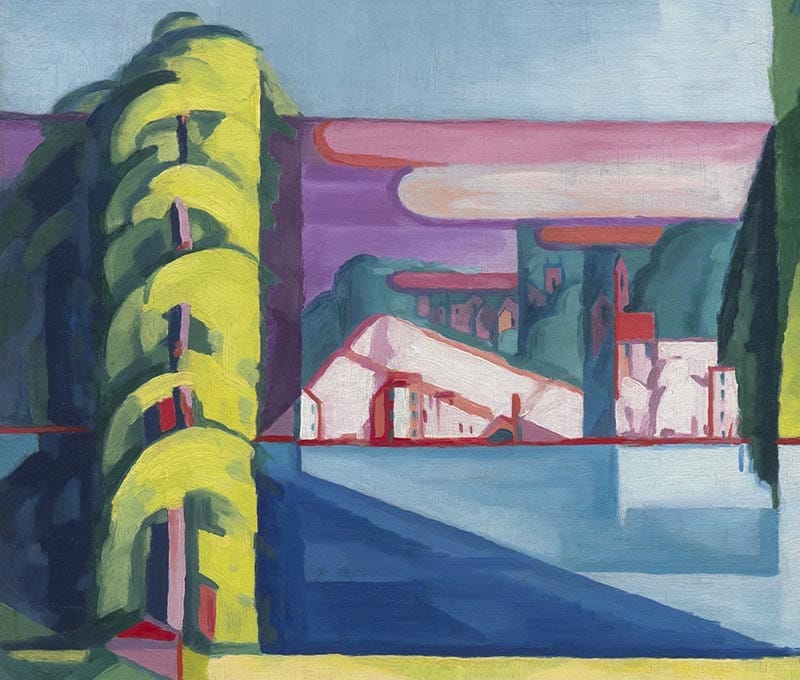
As Jeffery Hayes so beautifully observed, “The pictorial evolution of Tottenville—from its earlier descriptive state to a richly faceted, ‘deep-flat’ symbol of a memorable mood and place, in which color serves to bridge any remaining gulf between physical and psychological space—closely parallels Bluemner’s growth as a theorist. The painting’s synthetic character—its impassioned rhythmic color and window-like construction which appears to open upon a secret sanctuary—reflects his premise that ‘in the transformation of the natural into the Symbol, the factors which one finds in writing [and] speech…come into consideration: separation, character, essentiality, simplicity, reduction, variation, contrast, exaggeration, diminution, stylization, etc.’”v
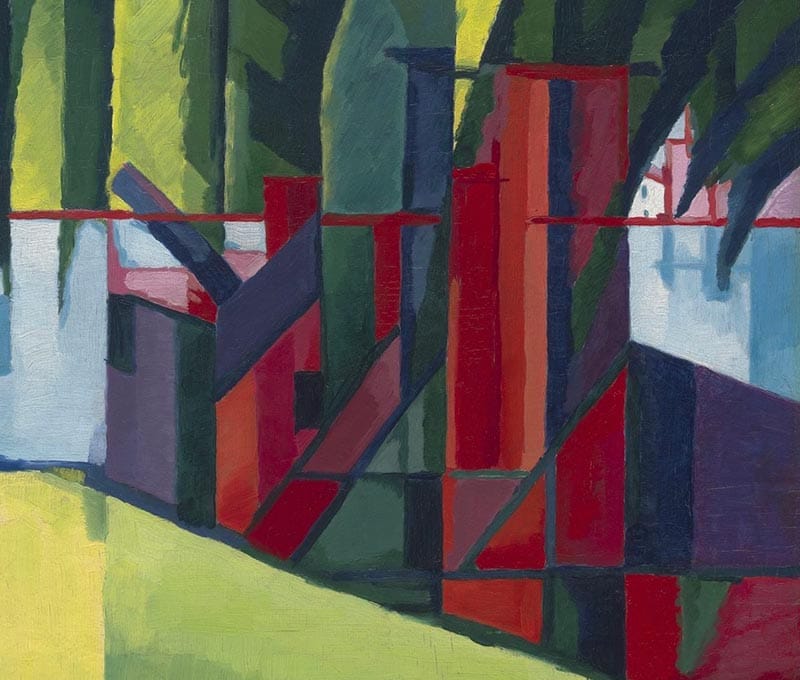
The reworking and reinventing Bluemner undertook in Perth Amboy West (Tottenville), 1911, 1915–17, a key part of his artistic process, is also evident in the Sonnet Series, 1935–36, 11 studies for an unrealized group of paintings. The exhibition Oscar Bluemner: The Sonnet Series, along with a digital coloring book, are available on Vilcek.org.
References
i Oscar Bluemner papers, 1886–1939, 1960. Box 1, Folder 31, Frame 11. Archives of American Art, Smithsonian Institution. https://www.aaa.si.edu/collections/oscar-bluemner-papers-5735
ii I am immensely grateful to the 176 contributing members of the Oscar Bluemner Painting Diary in the Smithsonian Digital Volunteers Transcription Center, https://transcription.si.edu/project/6589
iii Barbara Haskell, Oscar Bluemner: A Passion for Color (New York: Whitney Museum of American Art, 2005), 36–37.
iv Copy of the exhibition catalogue in the Oscar Bluemner papers, 1886–1939, 1960. Box 6, Folder 33, Frame 22. Archives of American Art, Smithsonian Institution.
v Jeffery R. Hayes, “Oscar Bluemner: Life, Art and Theory,” (PhD dissertation, University of Maryland, 1982), 236.
Related News
The Sonnet Series Coloring Book

“Marsden Hartley: Adventurer in the Arts” travels to New Mexico

Dayton Art Institute opens “Ralston Crawford: Air + Space + War”
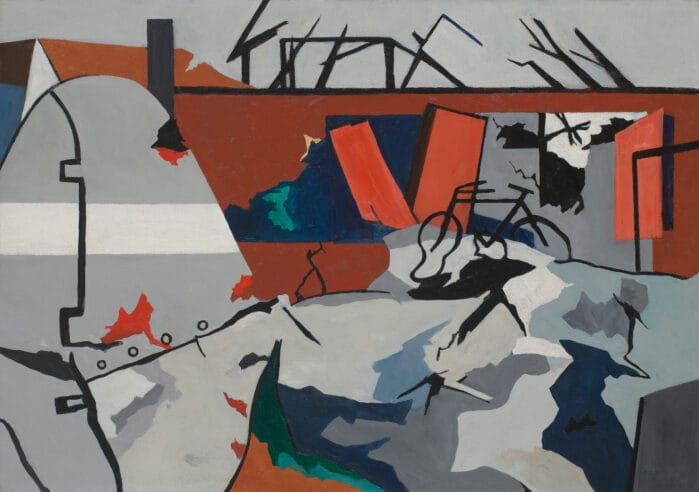
You may also be interested in
Perth Amboy West (Tottenville)
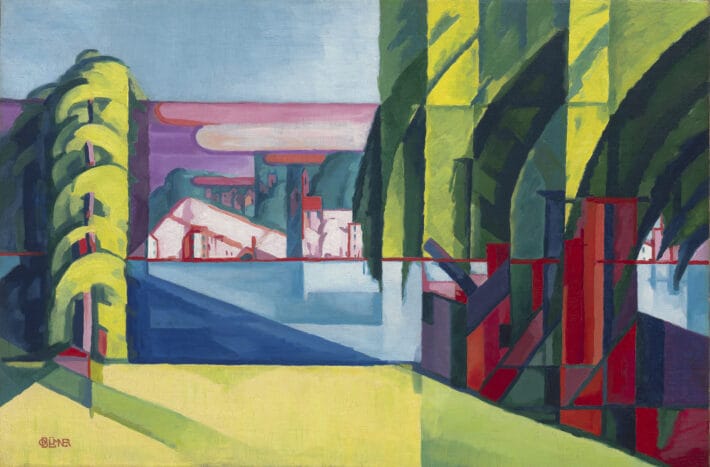
Oscar Bluemner’s Sonnet Series
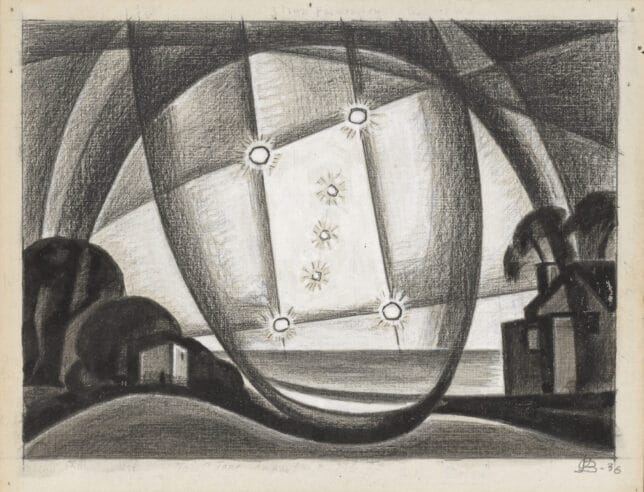
Waxenstein at Hamarsbach Garmisch, Bavaria
